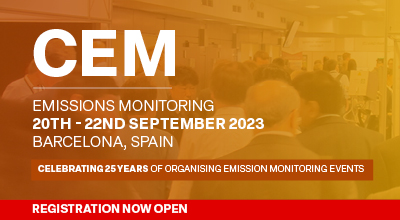| Abstract Title: | Validation of an “Infrared analytical technique” for sampling and determination of hydrogen chloride content in ducts and stacks from industrial sites |
| Presenter Name: | Mr Chris Dimopoulos |
| Co-authors: | Mr Jean POULLEAU |
| Company/Organisation: | NPL |
| Country: | United Kingdom |
Abstract Information :
We report validation data for a new method for the automatic determination of the concentration of gaseous Hydrogen Chloride (HCl) in waste gases emitted by industrial installations into the air. This method has been produced by CEN/TC 264 'Air Quality' under European Commission mandate M/513, and is based on the use of portable automated measuring systems (P-AMSs), e.g. portable tunable diode lasers, portable Fourier transform infrared (FTIR) spectrometers, etc.
The validated measurement method will be described in a European Standard which is based on CEN/Technical Specification (TS) 16429: 2013-03 "Stationary source emissions; Sampling and determination of hydrogen chloride content in ducts and stacks; Infrared analytical technique". The European Standard will be used in the measurements of HCl within the context of the conditions to be set out in permits issued according to the Industrial Emissions Directive (IED), in particular for waste incineration plants and waste co-incineration plants.
The main objectives of the validation trials were the following:
- Select appropriate measuring systems to take part in the validation study.
- Test the validity of QA/QC procedures and performance criteria specified in CEN/TS 16429.
- Determine the time required to carry out the calibration of the P-AMS and to passivate the sampling line.
- Obtain data related to the robustness of the method (repeatability and reproducibility).
- Existing P-AMSs on the market.
- Issues encountered during the calibration and quality control of P-AMSs.
- Results of the validation trials and the statistical data treatment (including repeatability and reproducibility data, estimate of the uncertainty of the method etc.).
- Key learnings on the implementation of automated methods related to very reactive components, and the adjustment procedure of a P-AMS.

